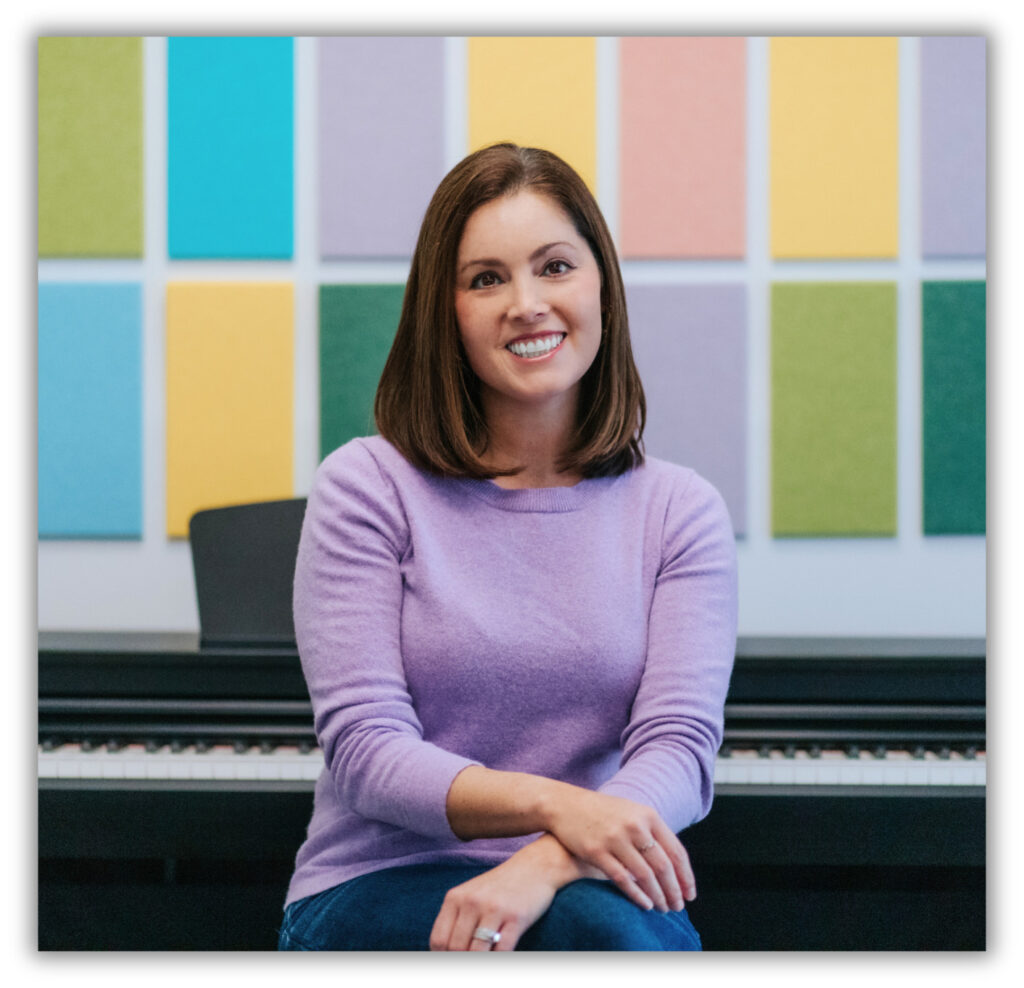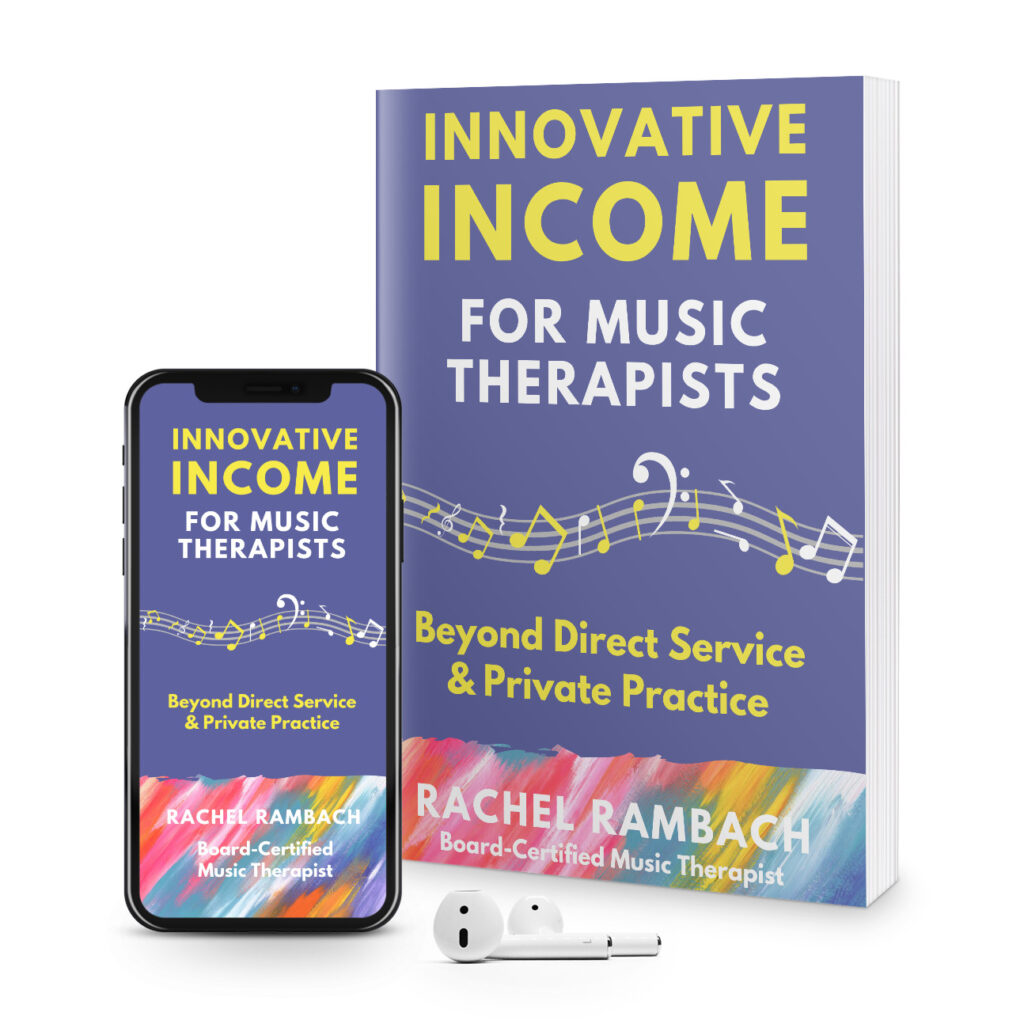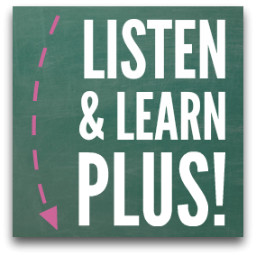by Rachel | Uncategorized
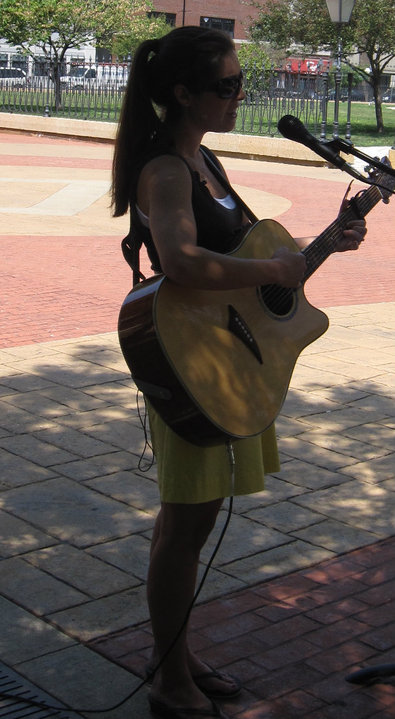
One of my favorite things about summer is playing gigs — something I don’t have much time for during the school year. I played my first gig ever back in 2008, and I’ll admit it: I was a little clueless. But three years and countless gigs later, I have a much better handle on things.
So yesterday when Kimberly Sena Moore posted on Facebook about playing her first gig next week, I was inspired to whip up this post with a few tips I wish I’d known way back when.
- Know your venue and audience. My set list for a bar gig is not the same as it is for a gig like today’s, which is outdoors on the Old State Capitol plaza. It helps to have a general idea of who will be listening, and what the environment will be like. Bar = all adults, lots of talking and background noise. Outdoor public area = children will probably be present, more eyes and ears on the performer.
- Dress comfortably. If it’s hot (it’s going to be 96 today!), wear something that will help you stay cool but that is still appropriate to the venue. Keep in mind that you’ll probably be bending over to set up equipment. And if you’re going to be standing (which I always do during a gig) make sure your shoes are comfortable.
- Be well prepared. There’s nothing worse than going into a gig feeling less than confident about the songs you’re playing. Start with songs in your comfort zone, and gradually add new material. It helps to play shorter gigs at first, so that you don’t have as much music to prepare.
- Put some thought into your set list. I always arrange my songs so that there aren’t too many fast ones all at once, and definitely not too many slow ones in a row. Vary the order not only by tempo, but also by genre and style. Keep your audience guessing!
- Throw in some crowd-pleasers. I do a mix of originals and covers at all of my gigs, but I’m always sure to include songs that are guaranteed hits. Songs like “I’m Yours” by Jason Mraz, “Rolling in the Deep” by Adele, and any other songs that are current or classic always go over well.
- It’s okay to use music. Some people feel pressured to have their repertoire completely memorized, but it’s not essential to a successful gig. The audience could care less whether you have a music stand in front of you, as long as you are entertaining. Just make sure not to have your eyes glued to the music — know it well enough so that you only have to glance at it from time to time.
- Arrive early and set up with plenty of time to spare. You don’t want to be scrambling around, checking levels, and tuning your guitar when people expect you to have started playing already. I always make sure I have a few minutes to just chill before I start my set.
- Interact with the audience. Sometimes it can be difficult to do this, especially when there is a lot going on and the setting is less intimate. But when you can, personalize your performance by telling stories about the songs you’re performing, give shout-outs to people in the audience, etc.
- Take breaks if you are playing a long gig. I made the mistake of only taking one quick break during my first couple of 3-hour gigs. My voice and fingers were not happy with me afterwards. Even if you take just five minutes, be sure to give yourself time to use the restroom, have a drink of water, and say hi to people in the audience every hour or so.
- Have fun! Don’t get too wrapped up in playing and singing perfectly. If you’re enjoying yourself, that will shine through and the audience will enjoy you, too. Invite your friends and family so that you have familiar smiling faces to look at and who will cheer you on.
Playing gigs is a LOT different that facilitating a music class or therapy session, as I quickly realized. But it’s a chance to work on your musicianship, as well as get your name out there.
What tips would you add to my list?
by Rachel | Uncategorized
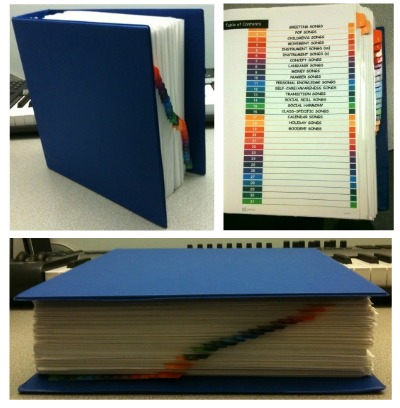
This was my bible during my first year as a professional music therapist. Throughout the nine months prior that I spent in internship, I compiled songs that I thought might come in handy (or already had) for music therapy sessions. I’m so glad I took the time to do that way back when, because here I am, four years later…still referring back to it and adding new songs as I go.
Of course, not every song is relevant anymore, especially now that I write most of my own material. But every single song on my recent list of 12 Songs Every Music Therapist Should Know can be found in this giant binder, as are many of the songs I’m about to add to that list.
I received several requests for my FULL list of essential songs, and since I aim to please, here goes! Note: I am not elaborating on each one as I did in my original list, because if I did, you’d still be reading this tomorrow…
- “Ain’t No Sunshine” (Bill Withers)
- “All Good Gifts” (Godspell)
- “All Star” (Smashmouth)
- “American Pie” (Don McLean)
- “Amazing Grace”
- “Apples & Bananas”
- “Be OK” (Ingrid Michaelson)
- “Blackbird” (The Beatles)
- “Blue Skies”
- “Blue Suede Shoes” (Elvis Presley)
- “Boogie Baby”
- “Boom Boom, Ain’t it Great to be Crazy”
- “Breakaway” (Kelly Clarkson)
- “Brown-Eyed Girl” (Van Morrison)
- “Bushel and a Peck” (Guys & Dolls)
- “Change the World” (Eric Clapton)
- “Circle of Life” (Elton John)
- “Clap For Love” (Little Miss Ann)
- “The Climb” (Miley Cyrus)
- “Colors of the Wind” (Vanessa Williams)
- “Day by Day” (Godspell)
- “Defying Gravity” (Wicked)
- “Do-Re-Mi” (The Sound of Music)
- “Don’t Worry, Be Happy” (Bobby McFerrin)
- “Everybody” (Ingrid Michaelson)
- “Fire & Rain” (James Taylor)
- “Firework” (Katy Perry)
- “Fix You” (Coldplay)
- “For Good” (Wicked)
- “The Girl I Mean to Be” (Secret Garden)
- “Glory of Love”
- “God Only Knows” (Beach Boys)
- “Hallelujah” (Jeff Buckley)
- “Happy Together” (The Turtles)
- “Here Comes the Sun” (The Beatles)
- “Hero” (Mariah Carey)
- “Hey Jude” (The Beatles)
- “Horse With No Name” (America)
- “How Sweet It Is” (James Taylor)
- “I Believe I Can Fly” (R. Kelly)
- “I Can See Clearly Now” (Lee Towers)
- “I Don’t Care if the Rain Comes Down”
- “I Got Rhythm”
- “I Have a Dream” (ABBA)
- “I Will Remember You” (Sarah McLachlan)
- “I Want To Teach the World To Sing”
- “If You’re Happy and You Know It”
- “I’m Forever Blowing Bubbles”
- “In the Jungle”
- “Jingle Bells”
- “John Jacob Jingleheimer Schmidt”
- “Jump, Jive ‘n Wail” (Louis Prima)
- “Just the Way You Are” (Billy Joel)
- “Lean on Me” (Bill Withers)
- “Let It Be” (The Beatles)
- “L-O-V-E”
- “My Favorite Things” (The Sound of Music)
- “My Girl” (The Temptations)
- “My Wish” (Rascal Flatts)
- “Never Never Land” (Peter Pan)
- “No Day But Today” (Rent)
- “No One is Alone” (Into the Woods)
- “A Noun is a Person, Place or Thing” (Schoolhouse Rock)
- “Ob-La-Di, Ob-La-Da” (The Beatles)
- “The Rainbow Connection” (Kermit the Frog)
- “The Raindrop Song”
- “River of Dreams” (Billy Joel)
- “Seasons of Love” (Rent)
- “Shake Your Sillies Out”
- “Side by Side”
- “Someone to Watch Over Me”
- “Somewhere Over the Rainbow”
- “Stand By Me” (Ben E. King)
- “Sunrise, Sunset” (Fiddler on the Roof)
- “Ta Ra Ra Boom De Ay!”
- “Take Me Out to the Ballgame”
- “This Little Light of Mine”
- “Three is a Magic Number” (Schoolhouse Rock)
- “Three Little Birds” (Bob Marley)
- “The Time of Your Life (Good Riddance)” (Greenday)
- “Top of the World” (The Carpenters)
- “Twist and Shout” (The Beatles)
- “Under the Boardwalk” (The Drifters)
- “When You Wish Upon a Star” (Pinocchio)
- “Wide Open Spaces” (Dixie Chicks)
- “You Are My Sunshine”
- “You Gotta Be” (Des’ree)
- “You Raise Me Up” (Josh Groban)
- “Your Smiling Face” (James Taylor)
- “You’ve Got a Friend” (James Taylor)
- “You’ve Got a Friend in Me” (Randy Newman)
- “Zip-A-Dee-Doo-Dah”
Notice the nice little scroll box? Right around song #35, I decided it was mandatory. Hopefully I’ve given you some new ideas for songs to add to your own repertoire…and like my last “essential” songs post, I want to know: which tunes am I still missing?
P.S. Did you know that you can gain instant access to a vast collection of over 200 songs (mp3, lead sheet, and instrumental track), videos, tutorials, and visual aides, plus ALL new releases from Listen & Learn Music?
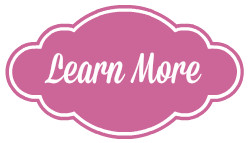
by Rachel | Uncategorized
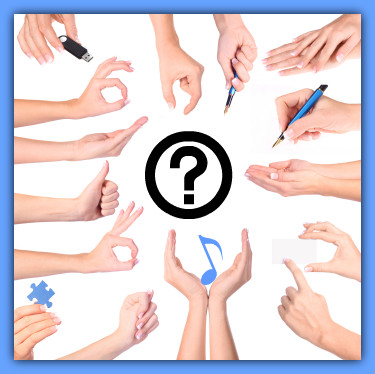
Earlier this week, I received an email from a reader with a few questions regarding the business and practical aspects of running a music therapy and teaching studio.
Thank you for all you do for music therapy advocacy and encouraging music therapists with ideas. Your energy and ideas inspire me to be more creative in my own practice. I’ve been following your blog for about 6 months now and love it, especially for the practical ideas it gives me for interventions. I’m a music therapy contractor working with hospice patients and preschool children at this time. I have only contracted with facilities until now, at which point I have an opportunity to possibly be the music therapist at a new “alternative” music academy. My understanding is that it is geared toward adaptive music lessons for kids with special needs, and they also want music therapy to be offered.
She then proceeded to list her questions, which I answered at length via email. After all that typing, I decided that since I get these kind of questions so often, I’d just share my answers here on the blog. So here they are!
Should I bill each student and have them pay for the upcoming month at the beginning of the month, to reduce chronic late payers?
Honestly, I prefer weekly billing. My students’ parents know that I expect payment every week at the lesson or session, and if for some reason they forget, they just double up the following week or mail me a check. However, I’ve been using (and 100% recommend) the online studio management software Music Teacher’s Helper and this makes monthly billing a snap. You should also take into account whether or not you have time for make-up lessons and sessions; at this time, I do not, which is why I lean toward weekly billing.
What should the consequences be if a payment is late?
I currently do not have a late payment penalty in place. Maybe I’m lucky compared to most, but I almost never have to deal with late payments. I think this has to do with the fact that my students pay weekly. If you do choose to bill monthly and want to have a late payment penalty in place, you could decide on a flat fee or maybe charge the cost of a lesson.
What should the expectations be for behavior in the studio?
I make my expectations very clear in the form of a letter to families when they join my studio. I outline my policy for parking, entering (don’t knock or ring the doorbell, take your shoes off), and waiting (use the living room, you may watch tv, where the restroom is located), as well as how I expect students to behave in their lessons or sessions.
The #1 expectation is respect — not only of me, but of my instruments, equipment, and the studio as a whole. It’s important to establish this early on, and to enforce it regularly. I’m laid-back in many ways as a teacher and therapist, but not when it comes to the treatment of my materials and myself. I also have a NO WHINING/I CAN’T policy that is repeated far more frequently than I’d like :)
What forms should a parent/student sign?
At the start of the summer session (when I commonly take on new students in larger batches), I give out an annual survey to all of my existing students’ AND new students’ families. It asks for all the typical contact information, in addition to diagnosis (if applicable), current goals, expectations, concerns, allergies, and anything else I might need to know as an instructor and music therapist. This keeps me up to date with my current students, and helps me get to know the new ones.
Do you send students home with “practicing” homework each week?
For both my mainstream and adapted piano, voice and guitar students, I fill out an assignment sheet and progress note at each lesson so that the parents and students know what is expected at the next lesson. There is a space to log practice/work time, and both the parent and student sign it. I’ve been doing this for the past couple of years, but will be moving to an electronic system (again, using Music Teacher’s Helper) this summer.
If so, what do you assign?
My students work out of a combination of method books, worksheets, sheet music, and other materials that I provide. I have each of them bring a 3-ring binder to their lessons every week, and that is where we keep their loose papers, progress notes, assignment sheets, and monthly calendars.
Assignments usually include whichever piece(s) of music they are currently working on, a written assignment from their theory book, and sometimes memorization work (i.e. scales, chords, reading notes on the staff).
Please note that the above applies to students who take mainstream and adapted lessons. In most cases, I don’t assign take-home work to my music therapy students, though I do send them home with CDs and materials from our sessions to supplement our work together.
How do you monitor and reward their progress?
Each week, we take out the assignment sheet from the previous week. We talk about the things they were to work on, and address any difficulty they might still be having. I’ll look over any written assignments, and then have them play their piece(s) and/or exercises for me. This is the point at which I fill out progress notes for parents to see after the lesson.
My younger students have the opportunity to choose a sticker from my vast collection (I have a sticker-buying addiction!) and place it on that day of the calendar if they have finished their work and played to the best of their ability. This is almost always the case. I don’t have a reward system for my older students, aside from verbal and written praise on their progress notes.
If you have additional questions about running a private practice and/or studio, feel free to leave them in the comments. It’s a topic that is very much on my brain these days since I’m busy getting things in place for the summer session, which will be here before we know it!
by Rachel | Uncategorized
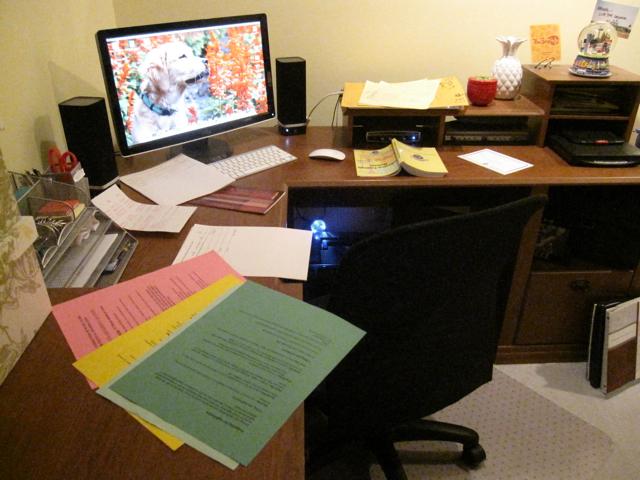
Recently, a reader wrote to me the following:
“I don’t know if you’d want to blog about your desktop but I’d like to know…is your desk always so ordered? I have a feeling you have an ability to clear the desktop daily. I am consistently in the midst of so many huge projects with my classes, well, I see the top of my desk 3 times a year. One of my goals this year is to see my desktop more than 3 times a year. Maybe you could show us what your desk looks like when you are REALLY in the swing of things.”
It’s confession time. I always have to organize my desk for photos, because it definitely does NOT look this neat on a regular basis.
In the picture above, I was in the midst of filling out student applications for my local federation of music clubs’ upcoming Junior Festival. This was right after I received the email, so it was the perfect opportunity to capture the evidence of my cluttered desktop.
So even though I’m guilty of the occasional messy desk, I’ve become very good at making it appear neat and tidy. I really have no choice, considering there are students and parents in and out of my office/studio on a daily basis. But what they don’t notice is my inbox tray stuffed to the gills, the papers concealed under a music book, and the sticky notes tucked into a drawer.
Despite all of these confessions, I do have some tips that help keep the visible clutter to a minimum and maintain my sanity.
- I keep filing boxes stacked right underneath my desk, so that I can quickly file away invoices, pay stubs, and important documents that don’t require further action.
- I make it a habit to empty my inbox tray (and then empty the trash can) every Sunday so that Monday is a clean slate.
- Almost everything has a place or a dedicated folder. I only allow myself one tiny junk drawer for things that I can’t find a regular use for yet just can’t part with.
- I’ve broken all of my former pack-rat habits. When I moved out of my parents’ house after college, they forced me to throw out the boxes and boxes of schoolwork — dating all the way back to 6th grade — that I absolutely did not need. It was hard at the time, but I’ve never looked back.
- I keep a scanner on my desk so that I can digitize anything I think I might need later but don’t want taking up valuable space.
And just in case you thought perhaps the picture up top was staged for this blog post, here’s another one (taken back in the day, when I still had my old Macbook and warhorse printer) to prove my occasional desk messiness.
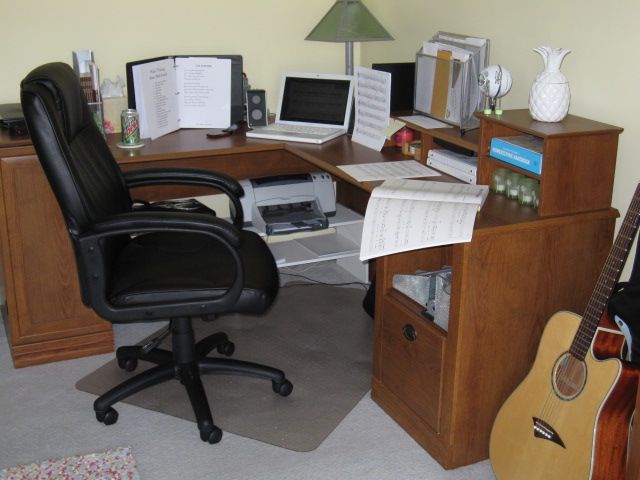
What about you? Are you one of those people who always has a perfectly tidy workspace? If so, please add your tips in the comments. And if you’re a total slob, tell us about that too so we can all feel better about ourselves. (Just kidding, sort of.)
by Rachel | Uncategorized
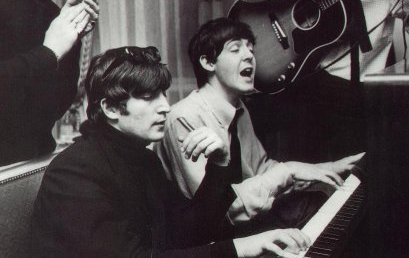
Lerner & Loewe. Rodgers & Hammerstein. Kander & Ebb. Lennon & McCartney. Simon & Garfunkel. All famous songwriting duos whose names just belong together, right?
To be honest, I’ve never collaborated with another songwriter when it comes to music therapy/children’s songs. (Unless you count therapeutic songwriting with students or piggyback songs, that is!) I’ve definitely used input from custom song clients, teachers, parents and others, but the actual process of creating the song is an independent one.
However, I do have a songwriting partner for other kinds of music. My mom and I have written wedding songs, choral Christmas pieces, songs for nonprofit organizations, and more over the last five years or so. We both bring our own strengths to each project, and the finished product reflects a nice mix of our styles. Goulet & Rambach has a nice ring to it :)
I’d love to collaborate with other music therapists at some point for a breath of fresh air and new inspiration. Any music therapy songwriting duos out there we should know about? Maybe you’re half of one — if so, let me know!








